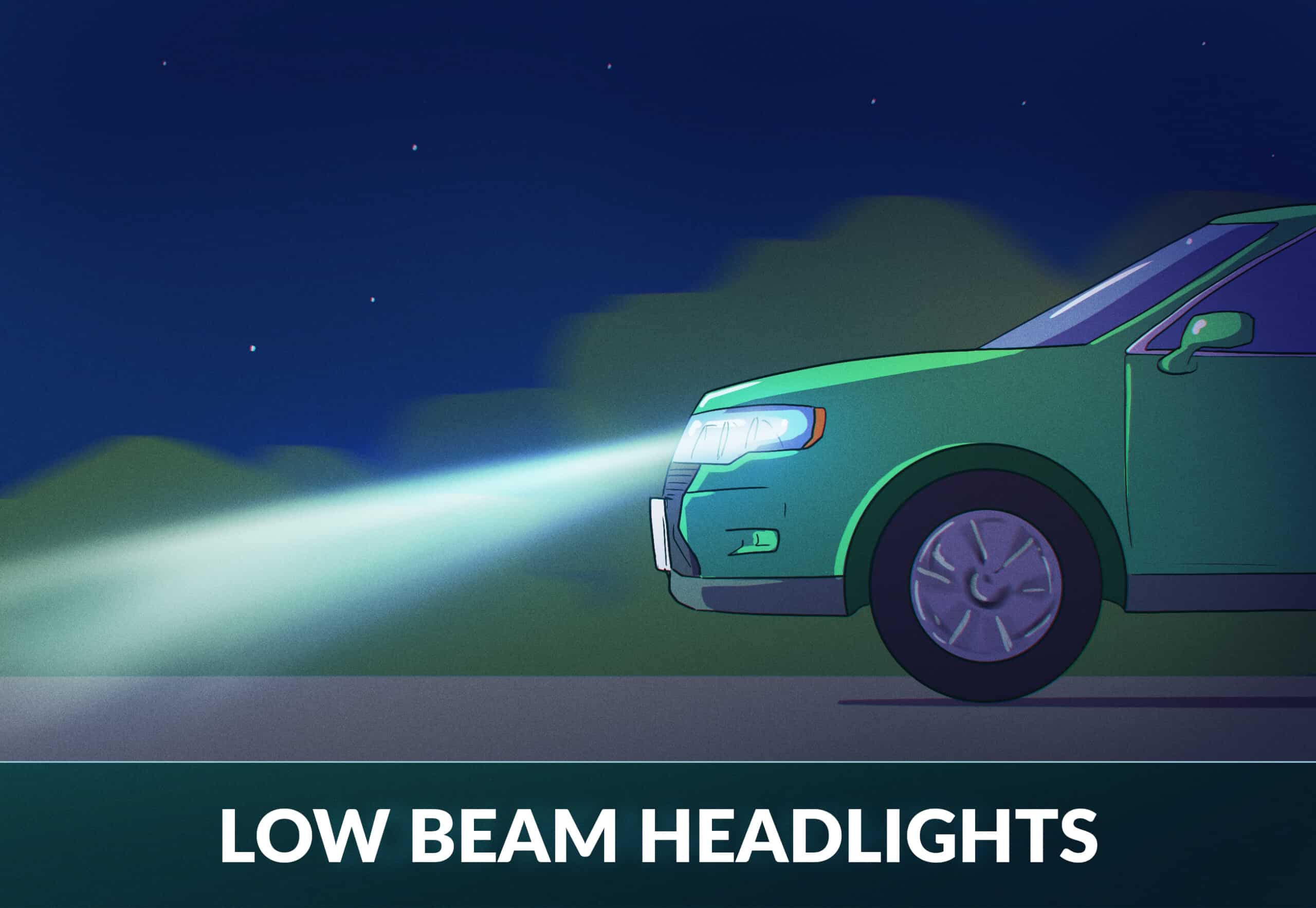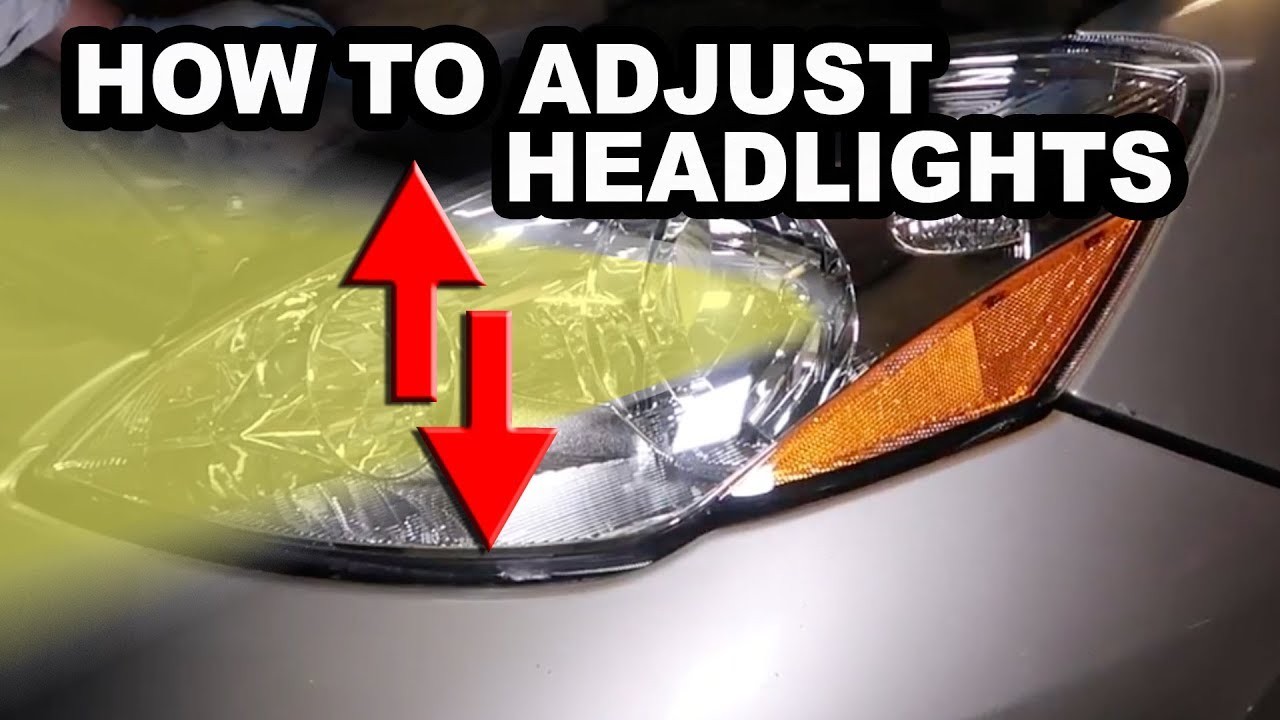How to adjust my car's headlights

Adjusting car headlights is an essential maintenance task for ensuring safety on the road. Properly aligned headlights allow for maximum visibility while driving, reducing the risk of accidents. Misaligned headlights can cause decreased visibility or even blind other drivers, posing significant dangers. In this article, we will discuss the importance of adjusting car headlights, signs that indicate adjustment is needed, the tools and materials required, step-by-step instructions for adjusting the headlights horizontally and vertically, checking and testing the adjusted headlights, and additional tips for successful adjustment. By following these guidelines, you can ensure your car's headlights are properly aligned for optimal performance and safety.
Importance of Adjusting Car Headlights
Properly adjusted car headlights play a crucial role in road safety. They allow you to see clearly while driving at night or in low visibility conditions, enabling you to identify potential hazards and react accordingly. On the other hand, misaligned headlights can have adverse effects on visibility, compromising your safety and that of other drivers on the road. Therefore, it is of utmost importance to have your car's headlights adjusted regularly to ensure clear visibility and reduce the risk of accidents.
One of the main dangers of misaligned headlights is decreased visibility. If the headlights are pointing too high, the road ahead may be poorly illuminated, making it difficult to see obstacles or pedestrians. Conversely, if the headlights are pointing too low, the range of vision is limited, reducing your ability to anticipate potential dangers. In both cases, your reaction time may be significantly affected, increasing the risk of accidents.
Another danger of misaligned headlights is the possibility of blinding other drivers. When headlights are not adjusted properly, they can produce a glare that impairs the vision of drivers coming from the opposite direction. The glare can be particularly distracting at night, making it challenging for other drivers to see clearly and navigate safely on the road. By ensuring your headlights are properly aligned, you can avoid this risk and contribute to overall road safety.

Signs Your Car Headlights Need Adjustment
There are several signs that indicate your car headlights may need adjustment. By being aware of these signs, you can promptly address any misalignment and maintain optimal visibility and safety on the road.
Uneven Lighting: If you notice that the intensity of light emitted by your headlights is uneven, with one side appearing dimmer or brighter than the other, it may indicate a misalignment. This can affect your visibility and compromise your ability to see the road ahead clearly.
Headlights Pointing Too High or Low: If you observe that your headlights are pointing too high or too low, it is a clear indication that adjustment is needed. Headlights that are aimed too high can blind oncoming drivers, while headlights that are aimed too low limit your visibility and reduce your reaction time.
Beam Pattern Changes: Misaligned headlights can result in a change in the beam pattern, causing irregular light distribution. This can manifest as scattered light or dark spots in the projected beam. Any sudden changes in the beam pattern should be thoroughly inspected and adjusted.
Observations from Other Drivers: Pay attention to feedback from other drivers. If you frequently receive complaints about the brightness or alignment of your headlights, it may be a sign that adjustment is needed.
It is important to note that headlights can become misaligned over time due to factors such as vibrations or accidents. Therefore, it is recommended to regularly check and readjust your car's headlights to maintain optimal performance and safety on the road.
Tools and Materials Needed
Before adjusting your car's headlights, it is essential to gather the necessary tools and materials. Having the right equipment at hand will ensure a smooth and successful adjustment process. Here are the tools and materials you will need:
- Screwdriver: A screwdriver is needed to access and adjust the adjustment screws on the headlights. Choose one that fits the size of the screws on your specific vehicle.
- Measuring Tape: A measuring tape will be helpful in accurately measuring the height and distance of your headlights during the adjustment process.
- Masking Tape: Masking tape can be used to temporarily mark the position of the adjustment screws during the adjustment process. This will allow you to easily make adjustments without losing your reference points.
Note: It is important to consult your car's manual or manufacturer's website for any specific tools or materials that may be required for your particular vehicle.

Preparing Your Car for Headlight Adjustment
Before beginning the headlight adjustment process, it is important to properly prepare your car. This will ensure an accurate and effective adjustment. Follow these step-by-step instructions to prepare your car for headlight adjustment:
- Locate the Adjustment Screws: Consult your car's manual to locate the adjustment screws for the headlights. These screws are usually located near the headlights or within the engine compartment.
- Set Up the Car: Park your car on a level surface, facing a wall or garage door. Make sure there is enough space in front of the car to work without any obstructions.
- Clean the Headlights: Before adjusting, clean the headlights thoroughly to remove any dirt, debris, or condensation that may affect visibility.
- Remove Obstacles: Ensure that there are no obstacles in front of the car that may interfere with the adjustment process. Clear away any objects that may obstruct the light beam.
By following these steps, you will create an ideal setup for adjusting your car's headlights, allowing for accurate measurements and adjustments to be made.
Adjusting Headlights Horizontally
The horizontal alignment of your car's headlights is crucial for ensuring proper visibility and avoiding blinding other drivers. Follow these step-by-step instructions to adjust the horizontal alignment of your headlights:
- Method 1: Using a Wall or Garage Door as a Reference:
- Position your car about 20 feet away from the wall or garage door, facing it directly.
- Turn on your headlights on the low beam setting.
- Mark the position of the center of each headlight beam on the wall or garage door using masking tape.
- Measure the distance between the two marks to ensure they are symmetrical.
- Use a screwdriver to adjust the horizontal alignment screws on the headlights. Turn them clockwise to move the beam to the right and counterclockwise to move it to the left.
- Make small adjustments and check the beam's position on the wall or garage door. Repeat the process until the beams are aligned and symmetrical.
- Method 2: Using a Headlight Alignment Tool:
- Obtain a headlight alignment tool from an auto parts store.
- Follow the instructions provided with the tool to attach it to your headlights.
- Adjust the alignment of the headlights according to the instructions provided with the tool.
- Remove the tool once the adjustment is complete.
By following either of these methods, you will be able to adjust the horizontal alignment of your car's headlights accurately.
Adjusting Headlights Vertically
The vertical alignment of your car's headlights is crucial for proper road illumination and avoiding blinding other drivers. Follow these step-by-step instructions to adjust the vertical alignment of your headlights:
- Method 1: Measuring Height from Ground:
- Park your car on a level surface, facing a wall or garage door.
- Measure and note the height from the ground to the center of each headlight.
- Use a screwdriver to adjust the vertical alignment screws on the headlights. Turn them clockwise to move the beam up and counterclockwise to move it down.
- Referencing your earlier measurements, make small adjustments and check the height of the beams on the wall or garage door. Repeat the process until the beams are at the desired height.
- Method 2: Using a Wall or Garage Door as a Reference:
- Position your car about 20 feet away from the wall or garage door, facing it directly.
- Turn on your headlights on the low beam setting.
- Mark the position of the center of each headlight beam on the wall or garage door using masking tape.
- Measure the height from the ground to each mark.
- Adjust the vertical alignment screws on the headlights using a screwdriver, taking into account the height measurements. Turn the screws clockwise to raise the beam and counterclockwise to lower it.
- Make small adjustments and check the height of the beams on the wall or garage door. Repeat the process until the beams are at the desired height.
By following these methods, you will be able to adjust the vertical alignment of your car's headlights accurately, ensuring proper illumination and safety on the road.
Checking and Testing the Adjusted Headlights
After adjusting your car's headlights, it is crucial to check and test them to ensure that the alignment is correct. Follow these step-by-step instructions to properly check and test the adjusted headlights:
- Use Reflective Surfaces: Park your car in front of a reflective surface, such as a glass storefront or a shiny surface.
- Turn on the Headlights: Turn on your headlights on the low beam setting.
- Observe the Beam Pattern: Look for a clear and symmetrical beam pattern. The beams from both headlights should be aligned and cover an appropriate area in front of the car.
- Check for Even Lighting: Ensure that the intensity of light emitted by both headlights is even, with no dark spots or scattered light.
- Adjust if Necessary: If you notice any issues with the beam pattern or lighting, make additional adjustments as needed.
By following these steps, you can verify that your car's headlights are correctly adjusted and functioning optimally.
Additional Tips and Troubleshooting
Here are some additional tips to ensure successful headlight adjustment:
- Inspect for Damaged Components: Before adjusting your headlights, inspect all components for any signs of damage or wear. Replace any damaged components to ensure proper alignment.
- Seek Professional Help: If you encounter any difficulties during the adjustment process or are unsure about making the adjustments yourself, it is advisable to seek professional help from a qualified technician.
Here are some common problems that may arise during the headlight adjustment process and how to troubleshoot them:
- Stuck Adjustment Screws: If the adjustment screws are stuck or difficult to turn, apply a penetrating lubricant and let it sit for a few minutes. Gently try turning the screws again, using caution to avoid breaking or damaging them.
- Uneven Beam Pattern: If the beam pattern is still uneven after adjustment, check for any obstructions or dirt on the headlights that may be causing the issue. Clean the headlights thoroughly and recheck the beam pattern.
- Uneven Lighting: If one headlight is significantly dimmer or brighter than the other even after adjustment, check the bulbs. Replace any faulty bulbs to ensure even lighting.
By following these additional tips and troubleshooting guidelines, you can overcome any potential challenges during the headlight adjustment process and achieve optimal results.
In conclusion, adjusting your car's headlights is crucial for maintaining optimal visibility and safety on the road. Misaligned headlights can significantly impair visibility and pose risks to both you and other drivers. By regularly checking and adjusting your car's headlights, you can ensure that they are properly aligned, providing you with clear visibility and reducing the risk of accidents. Use the guidelines provided in this article, and always consult your car's manual or manufacturer's website for specific instructions relating to your vehicle. By prioritizing headlight adjustment as part of your car maintenance routine, you can drive with confidence and peace of mind.

If you want to know other articles similar to How to adjust my car's headlights you can visit the category Automotive Mechanics.
